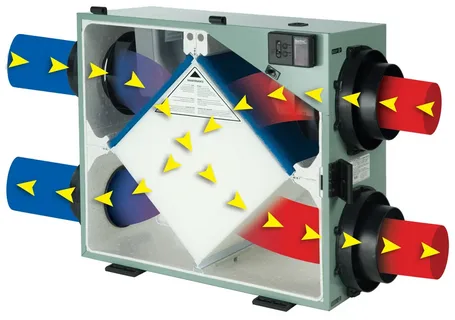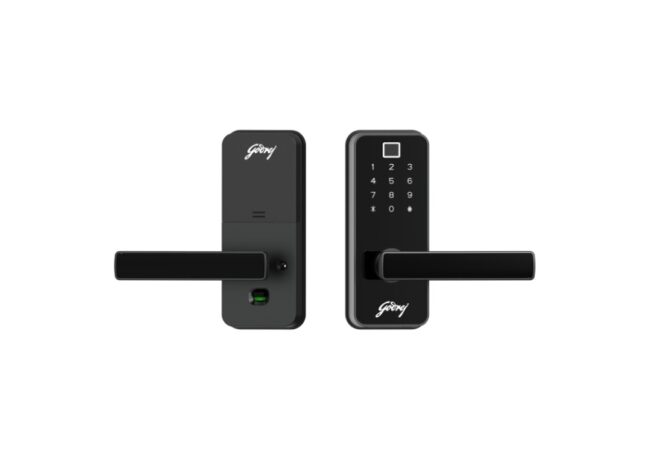
Guide to Optimizing Energy with HRV heat recovery ventilator
Are you looking to optimize energy usage and reduce utility costs in your home or business? One of the most effective ways to achieve this is by utilizing HRV heat recovery systems. HRV, or heat recovery ventilators, capture and reuse heat that would otherwise be lost, resulting in enhanced efficiency and significant cost savings. In this ultimate guide, we will explore the basics of HRV heat recovery ventilator, the benefits it offers, key considerations for installation, maintenance tips, common challenges, success stories, emerging technologies, and frequently asked questions. Let’s dive in and discover how HRV heat recovery can revolutionize your energy optimization efforts.
Understanding HRV Heat Recovery Basics
HRV heat recovery systems are engineered to harness energy from exhaust air and utilize it to temper the incoming fresh air. This innovative process occurs within the heat exchanger unit of the HRV system, where two air streams—outgoing stale air and incoming fresh air—pass without mixing. The core of the system captures heat from the exhausted indoor air before it leaves the building. This recovered heat is then transferred to the fresh, cooler air entering the system.
During colder months, this means the air being brought into the building is pre-warmed, reducing the demand on your heating system. Conversely, in warmer seasons, the system can help to cool incoming air, lessening the reliance on air conditioning units. This cycle significantly boosts the energy efficiency of heating and cooling systems, allowing for a reduction in overall energy consumption and utility expenses.
The beauty of HRV technology lies in its simplicity and effectiveness in reusing energy that would typically be lost, making it an essential component for energy-conscious homes and businesses aiming for higher efficiency and sustainability.
The Significance of Best Heat Recovery Ventilator
Choosing a high-caliber heat recovery ventilator is key to unlocking the most effective energy optimization within your space. Premium HRV units distinguish themselves through superior heat transfer capabilities, ensuring maximum heat retention during the ventilation process. This not only translates to heightened energy savings but also guarantees a consistently comfortable indoor atmosphere, irrespective of the external weather conditions.
A top-notch HRV system further stands out by offering durability and reliability, reducing the frequency and cost of repairs or replacements. It’s about more than just immediate savings; investing in the best heat recovery ventilator means investing in the long-term efficiency and sustainability of your building. Opting for a system that aligns with the unique needs of your property, considering factors like size and climate, will amplify the benefits received, making it a crucial decision in your journey towards optimized energy use.
Analyzing the Benefits of Heat Recovery Ventilator
Heat recovery ventilator offer a myriad of advantages that can significantly enhance both residential and commercial spaces. First and foremost, these systems are champions of energy savings. By recapturing heat from exhaust air and utilizing it to warm incoming fresh air, HRV systems reduce the workload on heating systems, thereby slashing heating costs. During warmer periods, this principle reverses to aid in cooling, offering a similar reduction in air conditioning expenses.
Beyond the immediate financial savings, HRV systems contribute to a healthier indoor environment. They continually replace stale indoor air with fresh outdoor air while retaining the energy spent on heating or cooling. This constant renewal of air improves indoor air quality, helping to eliminate pollutants, allergens, and moisture that can lead to mold growth.
Comfort is another significant benefit. HRV systems create a more comfortable living and working environment by maintaining a stable indoor temperature and reducing drafts. This is achieved without sacrificing energy efficiency, showcasing the system’s ability to balance comfort and cost-effectiveness seamlessly.
Lastly, HRV systems have a positive impact on the environment by lowering carbon emissions. By enhancing buildings’ energy efficiency, they contribute to reducing the overall energy demand and the carbon footprint associated with heating and cooling, aligning with broader sustainability goals.
Key Considerations for Energy Recovery Ventilator Installation
Before installing an energy recovery ventilator (ERV), it’s imperative to assess several critical factors to ensure optimal functionality and efficiency. The unique layout and size of the property play a significant role in determining the system’s capacity requirements. Ventilation needs vary greatly among different buildings, making it crucial to calculate the specific demands of your space accurately. Additionally, the local climate can influence the choice of system, as regions with extreme temperatures may necessitate more robust solutions.
Budget considerations also come into play, as investing in a high-quality ERV system can offer better long-term savings and efficiency, despite a potentially higher upfront cost. Selecting the right HVAC professional for the job is another vital step; experience and expertise in ERV systems will ensure that the installation adheres to the highest standards, aligning with both local regulations and the specific needs of your property. Careful attention to these factors can significantly impact the effectiveness and satisfaction with your ERV system.
Maximizing Efficiency with Proper HRV Maintenance
Maintaining optimal performance of your HRV heat recovery system is crucial for sustaining energy savings and ensuring longevity. Regular maintenance is the cornerstone of a well-functioning system. Key tasks include the routine cleaning or replacement of filters, which prevent dust and debris from clogging the system and reducing its efficiency. It is also important to inspect the ductwork periodically for any signs of leaks or blockages that can impede airflow and diminish the system’s effectiveness.
Additionally, keeping an eye out for wear or damage on the unit itself can prevent minor issues from escalating into costly repairs. Seasonal checks are recommended, especially before the onset of extreme weather conditions, to ensure the system is prepared to handle increased demands. Adhering to a structured maintenance schedule not only prolongs the life of your HRV system but also guarantees that it continues to operate at its most efficient, saving energy and costs over time.
Engaging a professional to perform an annual inspection can further optimize the system’s performance, ensuring that every component functions seamlessly together. This proactive approach to maintenance helps in avoiding the common pitfalls that could hinder the efficiency of your HRV heat recovery system, keeping it in top condition year-round.
Overcoming Common Challenges with Best Energy Recovery Ventilator
Addressing the challenges associated with HRV systems, such as noise, condensation, and freezing, is critical to maximizing their benefits. Selecting the right energy recovery ventilator tailored to your specific needs plays a pivotal role. To tackle noise issues, look for models designed with noise reduction technologies and ensure they’re correctly installed and insulated. Condensation can be mitigated by ensuring proper ventilation rates and humidity control, whereas systems with built-in defrost mechanisms can prevent freezing in colder climates.
Regular maintenance is essential to address these challenges proactively. By ensuring that your system is properly sized for your space and diligently maintained, you can minimize potential issues, making your best energy recovery ventilator an effective tool for energy optimization. Engage with professionals who can provide guidance based on the unique aspects of your property and local climate, ensuring your system operates efficiently year-round.
Case Studies: Success Stories of HRV Heat Recovery Implementation
Across the globe, a diverse range of properties have experienced significant energy savings and improved air quality through the implementation of HRV heat recovery systems. For example, a mid-sized office building in a temperate climate zone reported a 30% reduction in heating and cooling costs after upgrading to an HRV system.
The installation was part of a broader renovation aimed at improving energy efficiency and sustainability. Similarly, a residential case study highlights a family who witnessed a noticeable improvement in home comfort and a substantial decrease in monthly energy bills. Their HRV system was carefully selected based on the size of their home and local weather conditions, demonstrating the importance of tailored HRV solutions.
Another notable success story comes from a high school in a colder region, where administrators were challenged with maintaining a warm and healthy environment for students during harsh winters. By integrating an HRV system with advanced heat exchangers, the school not only achieved a consistent indoor temperature but also significantly enhanced the quality of air within classrooms, contributing to a better learning environment.
These examples underline the versatility and effectiveness of HRV heat recovery in various settings, showcasing its potential to transform energy consumption patterns and create healthier indoor spaces. Through strategic implementation and maintenance, HRV systems are proving to be a crucial component in the quest for energy optimization and sustainability across sectors.
The Future of HRV Heat Recovery and Emerging Technologies
The horizon for HRV heat recovery systems is expanding rapidly, driven by innovations that promise to redefine how we approach energy optimization. Noteworthy advancements are on the rise, such as the integration of AI and machine learning technologies, which aim to automate and enhance the efficiency of ventilation systems dynamically. These smart systems can analyze a multitude of factors in real-time, including indoor air quality, occupancy, and even weather forecasts, to adjust ventilation rates precisely for optimal energy use and comfort.
Another exciting development is the advent of ultra-efficient heat exchangers crafted from novel materials, offering superior heat transfer rates while minimizing energy losses. This leap in material science not only boosts the performance of HRV units but also extends their durability under varying climatic conditions.
Additionally, the push towards a more holistic approach in building management has led to the integration of HRV systems with broader smart building technologies. This seamless connectivity allows for a unified control of heating, cooling, and ventilation systems, leading to unprecedented levels of energy efficiency and indoor environmental quality.
These emerging technologies highlight the industry’s commitment to pushing the boundaries of what’s possible in HRV heat recovery, ensuring that as our needs and challenges evolve, so too will the solutions at our disposal.
FAQs
1. How does an HRV system differ from a traditional ventilation system?
An HRV system recovers heat from exhaust air and uses it to pre-condition the incoming fresh air, making it more energy-efficient than traditional systems that expel the heated air and pull in outside air without pre-warming it.
2. Can HRV systems be used in all climates?
Yes, HRV systems are versatile and can be adapted to virtually any climate. They are particularly beneficial in regions with extreme winter or summer temperatures, as they can significantly reduce the need for additional heating or cooling.
3. What is the expected lifespan of an HRV system, and how often does it need maintenance?
HRV systems typically have a long lifespan, often exceeding 15 years with proper maintenance. It’s recommended to check filters every few months and have a professional service the system annually to ensure it remains in peak condition.
Conclusion
HRV heat recovery systems embody a transformative approach to enhancing energy efficiency and slashing utility costs. This comprehensive guide has illuminated the path towards optimizing energy consumption through the strategic deployment of HRV technology. From understanding the core principles that drive these systems to recognizing the critical role of proper selection, installation, and maintenance, we’ve covered the essential steps to maximize their benefits. As we look towards a future where efficiency and sustainability are paramount, HRV heat recovery stands out as a key player in creating more resilient and energy-smart buildings. Let this guide serve as your roadmap to making informed decisions that elevate your energy management strategy, embracing the significant advantages that HRV systems offer.


